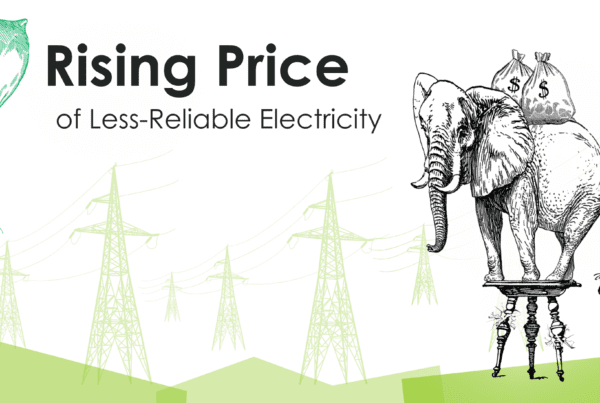A couple weeks ago, I wrote about nationalizing pieces of energy efficiency programs, namely technical resource manuals from which energy impacts (savings) and measure costs are derived. The post explained why this is a bad idea for a number of reasons. This week features chaos at the state level.
It seems states with their energy efficiency policies are parallel to people who go to Washington DC and operate in the alternate universe inside the beltway. The longer they exist, the more schizophrenic and/or demented and/or dysfunctional they become.
Utilities are forced, for lack of a better term, by regulators to meet savings goals with their energy efficiency portfolios. They also need to spread it around so segments that are difficult to cost-effectively serve, such as small business and low income, essentially get their money back. Regulatory agencies are, as far as I know, all state-run organizations. Now, imagine if the state itself runs an enormous energy efficiency program that competes with the utility-mandated programs for the same customers.
Competition is normally good as it promotes better products and services more cost effectively, generally advances society, and makes life better in many ways. However, this sort of competition would be like forcing Coke to advertise and sell a certain number of twelve packs from the grocery store, but when shoppers get to the checkout line they are offered free Pepsi from the state. Coke: back to the grocery isle. Pepsi: thank you very much.
It gets even worse for energy efficiency; in particular for service-oriented programs where information, knowledge, and technical expertise are needed to sell energy efficiency. Energy Service Companies, or ESCOs, are a perfect example. ESCOs deliver performance contracts, which are huge energy efficiency projects that may include everything from new control systems to window replacements. For a nauseating example, Google “Empire State Building” and after weeding out the Wikipedia hits, the next 5000 hits will be about the performance contract with Johnson Controls, where they say it’s saving energy, but they never prove it to me or the rest of us with billing data.
In general, the ESCO invests a lot of time and money on the front end to generate a contract. For the 100,000th time, buildings are not like cars, trucks, mopeds, and chocolates. They are all very different, and you never know what you are going to get. First, there is benchmarking the facilities against similar ones to determine energy intensity and savings potential. This can cost thousands because the ESCO has to build rapport and trust with the customer just to get to the point of looking in their underwear drawer (energy records, building square footage, and so forth). Then, there is the actual benchmarking.
Supposing the facility, or facilities, pass the benchmarking test, or fail it, depending on how you look at it, the buildings are clearly wasting a lot of energy. The ESCO must establish a more defined project. They must identify actual measures that save gobs of energy cost effectively and put relatively accurate cost and savings estimates together. If this sounds like some sort of energy assessment or feasibility study, it is.
Somewhere along the line the owner and the ESCO agree to a contract, and the project is locked in. The ESCO performs all this front end stuff at a cost of tens of thousands of dollars with the contractual obligation of the customer moving forward with the implementation, to be provided by the ESCO for a lot of money – a story for another day.
Competition for the entire package from rapport building through project implementation is fine, but you cannot start competition half way through the process, and this is what some states do. For example, in the above case, suppose Johnson Controls, Honeywell, Siemens, Ameresco, or another ginormous performance contractor invests a quarter million dollars in project development and the state says, “Wup, wup, wup, wup, wup.” You have to bid out project implementation (construction) to ensure the customer gets the best deal at the lowest price. There goes performance contracting – the end of the world as we know it, and I don’t feel fine (if I’m a performance contractor). Nobody will spend all this front end development cost to have it handed to someone else for the payoff.
In some unnamed states where we work, this is pretty much exactly what happens. The utilities have to meet their goals. They already have the rapport with the customer. Their programs lead the horse to water and then the state pulls up a trough next to it with apple juice in it. The horse suddenly loses its appetite for water and takes the apple juice instead, provided by the state[1]. Thank you very much, sucker utility. Now get back out there and get your goals, and I’ll swipe the next one from you too. By the way, I’ll stick you in the eye with a sharp stick too if you don’t meet your goals, loser.
Actually, what happens is, the state offers greater monetary incentives, in many cases, than the utility. The state does hardly any marketing, provides no intellectual value, and brings nothing to the table to speak of. In another uh, environment, I have another term for the state: parasite, free rider, poacher.
Speaking of nationalizing EE, Omaha/Lincoln report that $3.5 million of a $10 million EE stimulus project has been spent. Results: 1/3 of the spent amount is on marketing alone, not including administration. The grant was to “create” 300 jobs. A reported 13 have been created, which means it’s probably closer to 3, but even at 13, that’s $270,000 per job. Congratulations!
[1] The payer of the incentive gets full credit for the savings.





Join the discussion One Comment